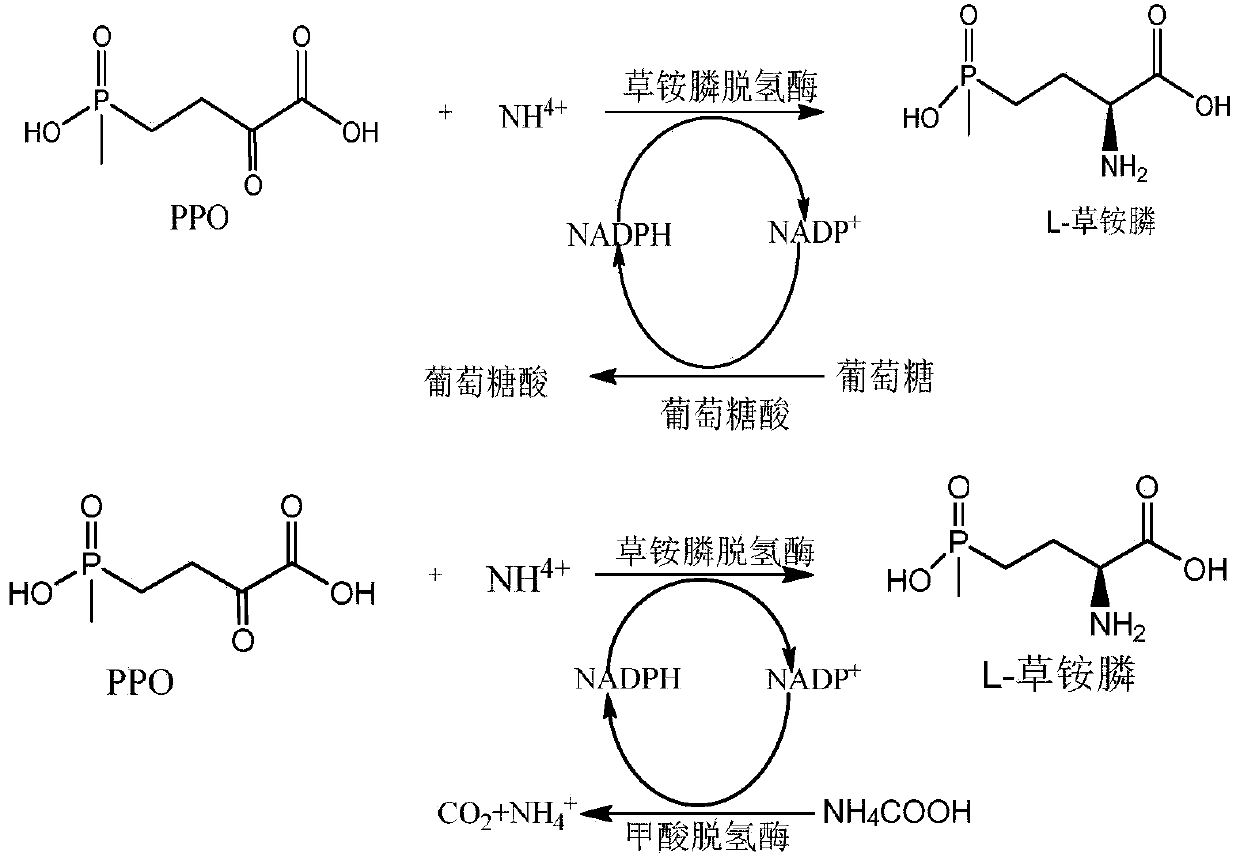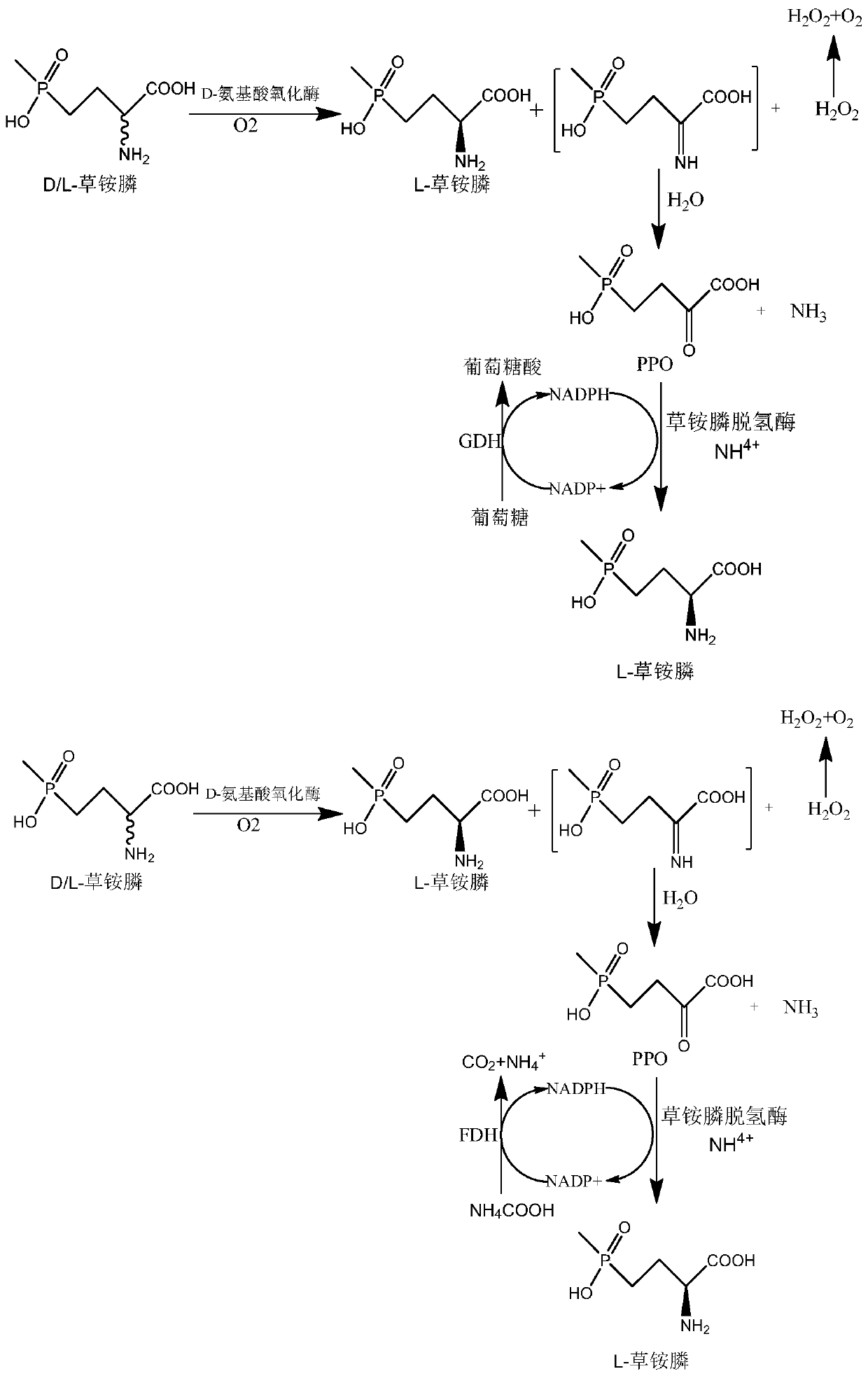Recombinant glufosinate-ammonium dehydrogenase, genetically engineered bacterium and application of recombinant glufosinate-ammonium dehydrogenase in preparation of L-glufosinate-ammonium
A technology of genetically engineered bacteria, glufosinate-ammonium, applied in genetic engineering, application, plant genetic improvement and other directions, can solve the problems of troublesome separation of L-glufosinate-ammonium, incomplete transformation of raw material PPO, etc., and achieve easy separation and purification, yield High, simple process effect
- Summary
- Abstract
- Description
- Claims
- Application Information
AI Technical Summary
Problems solved by technology
Method used
Image
Examples
Embodiment 1
[0050] 1. Construction of recombinant glufosinate-ammonium dehydrogenase gene library
[0051] The construction of recombinant glufosinate-ammonium dehydrogenase mainly adopts the method of staggered extension PCR: design primers 1 and 2, and introduce Sac I and NotI restriction sites in the design of primers at the same time. Wild-type glufosinate-ammonium dehydrogenases PPTDHS1, PPTDHS2, PPTDHS3, PPTDHS4 from Pseudomonas extremaustralis, Pseudomonas moorei, and Pseudomonas saudiphocaensis (NCBI The accession numbers are WP_092488511.1, WP_010562566.1, WP_090325311.1 or WP_037025837.1), and the glufosinate-ammonium dehydrogenase mutant PPTDHE3-A164G (patent application number 201910813762.6) and PPTDHE0-V375S (patent application number 20149197 , a total of 6 target genes of glufosinate-ammonium dehydrogenase, through staggered extension pcr, gene recombination, to obtain a recombinant glufosinate-ammonium dehydrogenase gene library with Sac I and NotI restriction sites.
[...
PUM
 Login to View More
Login to View More Abstract
Description
Claims
Application Information
 Login to View More
Login to View More - R&D
- Intellectual Property
- Life Sciences
- Materials
- Tech Scout
- Unparalleled Data Quality
- Higher Quality Content
- 60% Fewer Hallucinations
Browse by: Latest US Patents, China's latest patents, Technical Efficacy Thesaurus, Application Domain, Technology Topic, Popular Technical Reports.
© 2025 PatSnap. All rights reserved.Legal|Privacy policy|Modern Slavery Act Transparency Statement|Sitemap|About US| Contact US: help@patsnap.com



